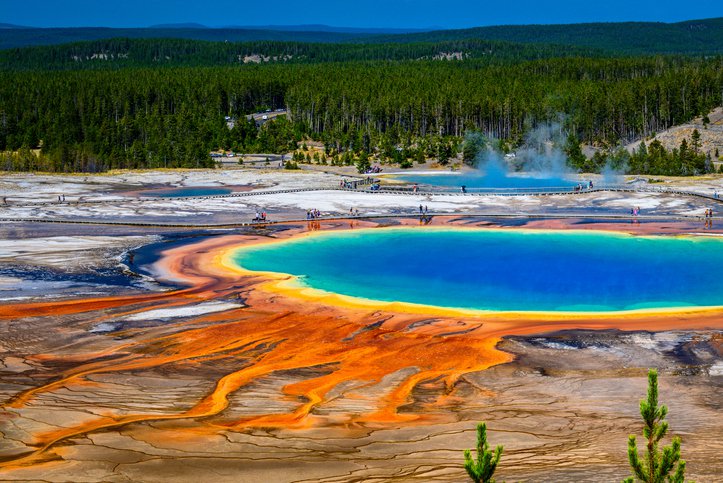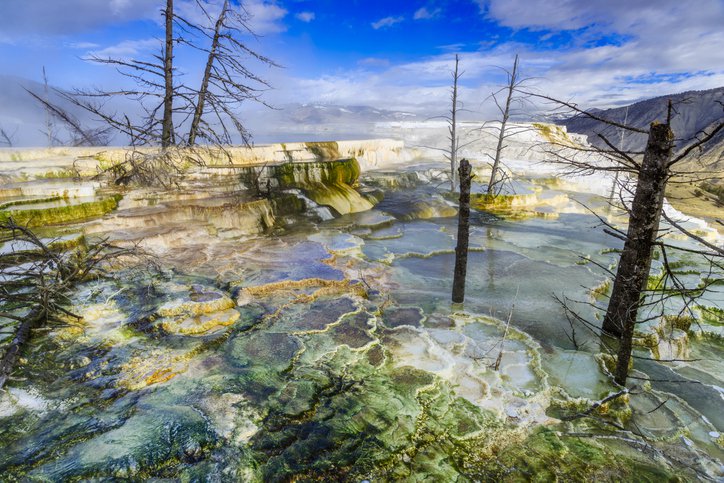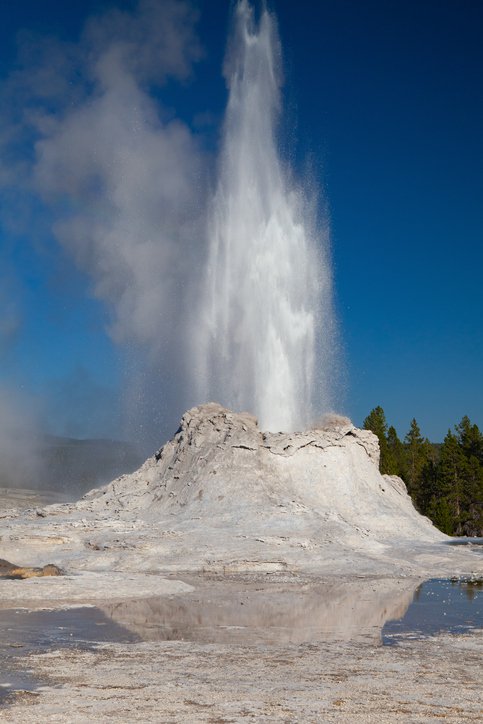Volcano: Yellowstone Caldera
Every now and then, a news headline pops up about the Yellowstone supervolcano and all the dire things that could happen if it erupted. Those headlines raise a few questions, such as what exactly is a supervolcano, is there one at Yellowstone, and how likely is it to erupt?

First, a supervolcano, as defined by the United States Geological Survey (USGS), is a volcanic center that at one point in time erupted more than 1,000 cubic kilometers (240 cubic miles) of material, enough to bury the entire state of Virginia in almost 30 feet of ash and volcanic debris. Eruptions of that size generally create a circular collapse feature called a caldera.
The largest eruption at Yellowstone (2.1 million years ago) had a volume of 2,450 cubic kilometers - enough material to cover the entire state of Virginia in ash over 70 feet thick. Like many other supervolcanoes, Yellowstone has also had much smaller eruptions. However, the Yellowstone supervolcano has had three major eruptions of supervolcano proportions: 2.1 million years ago, 1.2 million years ago and 640,000 years ago.

The latest eruption of 640,000 years ago created the current 35-mile-wide, 50-mile-long Yellowstone Caldera. This eruption was 2,500 times larger than the 1980 eruption of Mt. St. Helens, and ash deposits can still be found in places as far away as Iowa, Louisiana and California.
So now we know what a supervolcano is and that there is, indeed, one at Yellowstone. If you have been to Yellowstone, you may be thinking, “what volcano? I didn’t see one.” That’s because the entire park is a volcano, and the intense heat from all that magma below the surface powers Yellowstone’s world-famous geysers, hot springs and mud pots.

So how did a supervolcano come to be there? The Yellowstone supervolcano formed over a hotspot under the Earth’s crust. Recall that a hotspot is a place where the Earth’s mantle is unusually hot causing magma to rise. This super-hot magma sometimes pierces the Earth’s crust to form a volcano.
How likely are we to experience a Yellowstone eruption of supervolcano proportions? Fortunately, the likelihood of that happening is exceedingly low. According to Jacob Lowenstern, a research geologist at USGS, the chances that the Yellowstone supervolcano will erupt and cause mass destruction within a century are about 1 in 10,000, which is about as likely as a giant asteroid hitting Earth. So take a deep breath. It looks like beautiful Yellowstone National Park will be around for a while longer.
Love volcanoes? Learn more about volcanoes' awesome power of creation in Volcanoes: The Fires of Creation now showing in the Dome.